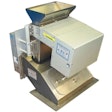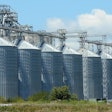
South Asia, which includes Afghanistan, Bangladesh, Bhutan, India, Maldives, Nepal, Pakistan, and Sri Lanka, accounts for 24% of the world’s population, with 1.84 billion people in 2019.
Over the past five years, U.S. agricultural exports to the region have grown 85%, from $2.30 billion in 2015 to $4.25 billion in 2019, led by cotton, tree nuts, soybeans, and dairy products. U.S. bulk commodities are being purchased by large companies in South Asia that recognize the value of U.S. products.
In addition, the region’s expanding middle class and increasing number of households with disposable income, combined with growing demand for protein products, makes it a promising market for imports of intermediate and consumer-oriented goods from the United States.
Careful attention to changing consumer demands remains key for U.S. businesses to take advantage of the region’s import growth potential.
U.S. Export Growth & Macroeconomic Considerations
Among the U.S. commodities that have seen significant sales growth in South Asia is cotton, with exports up 180% in the past five years, from $308 million in 2015 to $864 million in 2019. The COVID-19 pandemic’s impact on the region’s textile industry softened demand for U.S. cotton exports in 2020, but in the long term South Asia will remain a significant importer of cotton, especially as textiles and value chains continue to shift from China to the region. U.S. tree nut exports to the region grown 35% over five years, from $617 million in 2015 to $833 million in 2019, peaking at $1.06 billion in 2018.
According to World Bank data, South Asia’s population grew at an annual rate of 5% between 2015 and 2019. In 2020, the region’s GDP is projected to decline by 7.7% as a result of COVID-19.
However, going forward, Euromonitor data show promising growth in the number of households with disposable income greater than $10,000 annually, including a projected increase from 2019 to 2024 of 26% in India, 68% in Bangladesh, and 2% in Sri Lanka. While generally not considered part of the South Asia region, Burma is on a similar trajectory with expected growth of 69% by 2024.
While these percentage increases are impressive, the growing middle class still remains a small percentage of these countries’ populations. Still, the expansion of the existing middle class and households with expendable income bode well for increased U.S. agricultural exports of intermediate and consumer-oriented goods.
Looking Ahead
Cotton, soybeans, soybean meal, and tree nuts remain the primary U.S. exports to South Asia. With the region’s growing population and sizeable young demographic, there are continued opportunities to expand U.S. agricultural exports.
Bangladesh and Burma look particularly promising, while India’s various trade restrictions limit market access for U.S. foods, including most animal and livestock-derived products. Burma’s recent incorporation into the world economy and astonishing economic growth in the last decade give it unique potential for future export growth.
With the global economy’s expected recovery from the COVID-19 pandemic in the latter portion of 2021 and beyond, demand for cotton is expected to rise. South Asia remains a prime destination for U.S. cotton export growth as textile manufacturers shift away from China.
Feed grains such as corn and distillers’ dried grains with solubles also show promise. The demand for imported food and agricultural products is improving, and packaged, protein-rich, high-value food products, fresh fruits, and tree nuts are among the most significant market segments.
These rapidly growing markets will continue to provide opportunities for U.S. food and agricultural products despite persistent challenges including high tariffs, changing regulatory environments, technical and phytosanitary barriers, and competition from foreign and domestic suppliers. In order to expand U.S. exports to these growing markets, exporters should pay careful attention to changing consumer demands.
Read the full reporthere.





















